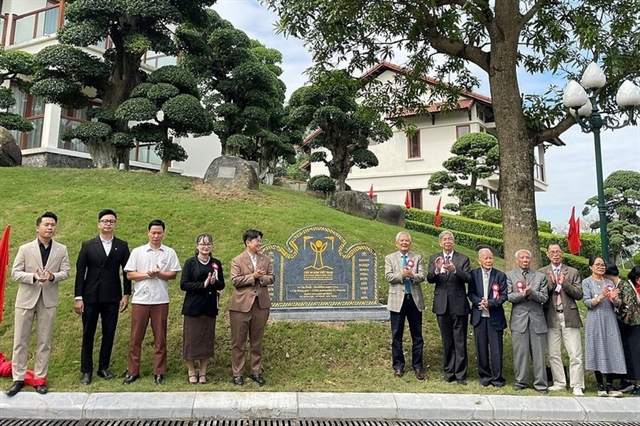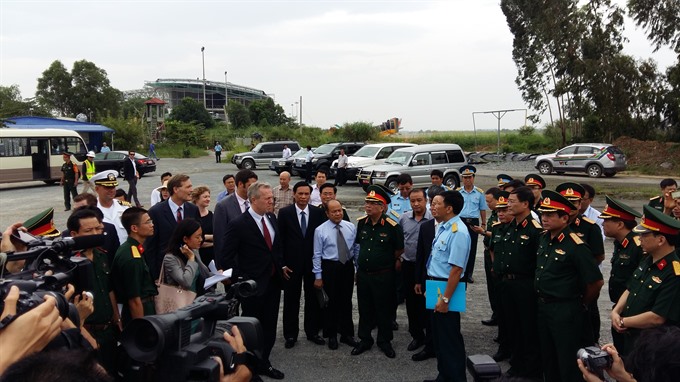 Environment
Environment

Việt Nam and the United States marked the start of the second and final phase of thermal treatments at the Đà Nẵng Airport yesterday to clean up dioxin contamination caused by US forces more than 40 years ago.
 |
| Dioxin contaminated soil pile at the Đà Nẵng Airport. |
Đà Nẵng — Việt Nam and the United States marked the start of the second and final phase of thermal treatments at the Đà Nẵng Airport yesterday to clean up dioxin contamination caused by US forces more than 40 years ago.
This phase targets approximately 45,000 cubic metres of soil and sediment contaminated by dioxin (the defoliant also known as Agent Orange). The project is of great benefit to the people of Đà Nẵng and is of historic importance for the bilateral relationship.
Attending yesterday’s event, Senior Lieutenant General Nguyễn Chí Vịnh said the ongoing project reflected a strong commitment of the two governments.
“We witnessed the first successful phase of the project, and the Government of Việt Nam urged relevant agencies to speed up the second phase and return a safe and clean space for Đà Nẵng City to build a second terminal at the airport in preparation for the 2017 APEC (Asia-Pacific Economic Co-operation) Summit,” Vịnh said.
“I would say to the US President at the APEC Summit that the site, which used to be a former airbase and battle site, has been wiped free of dioxin contamination in a joint effort between Việt Nam and the US,” he added.
Vịnh, who is deputy minister of the National Defence of Việt Nam, added that the airport would be used for the arrrival of top leaders from 21 member countries participating in the APEC event.
He also said the defence ministry, in collaboration with the ministry of natural resources and environment and the US Agency for International Development (USAID) would continue a study of the dioxin-contaminated site at Biên Hòa Airport in Đồng Nai Province, as well as other spots in Việt Nam.
Vịnh said he hoped that the US Government would commit to the cleanup of Biên Hòa Airport – which was an airbase during the American War.
 |
| Senior Lieutenant General Nguyễn Chí Vịnh and US Ambassador Ted Osius tour the thermal treatment system at the Đà Nẵng Airport. VNS Photos Công Thành |
US Ambassador Ted Osius and Vịnh switched on the thermal treatment system with many US and Vietnamese Government officials, representatives of foreign embassies and development partners and media representatives in attendance.
“In a moment we will ceremonially start thermal treatment for the final batch of contaminated soil and sediment. I am encouraged by how this project continues to be a symbol of our honesty about the past, dealing with what remains, and turning an issue of contention into one of collaboration,” he said. Both Vietnamese and Americans enjoyed the benefits of the growing friendship, Osius said.
Osius reminded those present that “during his visit to Việt Nam in May 2016, President Obama announced a commitment to partnering with Việt Nam to make a significant contribution to cleaning up dioxin contamination at Biên Hòa.”
He said both governments are reviewing the report’s recommendations and developing a plan to address the contamination.
In all, the Environmental Remediation of Dioxin Contamination at Đà Nẵng Airport will treat an estimated 90,000 cubic metres of contaminated soil and sediments to a level below the Government of Việt Nam standard of 150 parts per trillion.
As scheduled, the second phase of thermal treatment is expected to be completed in mid-2017 with site restoration and demobilisation expected in 2018.
The contaminated soil and sediment will be heated by 1,254 heating wells to a temperature of 335 degrees Celsius over four months, with approximately 95 per cent of the dioxin estimated to be destroyed within the structure.
The five-year project draws on a total fund of US$84 million, of which VNĐ35 billion (US$1.6 million) comes from the Vietnamese Government. — VNS